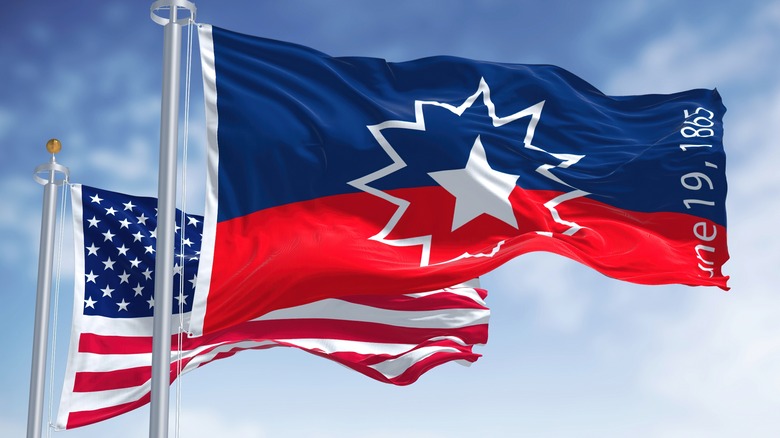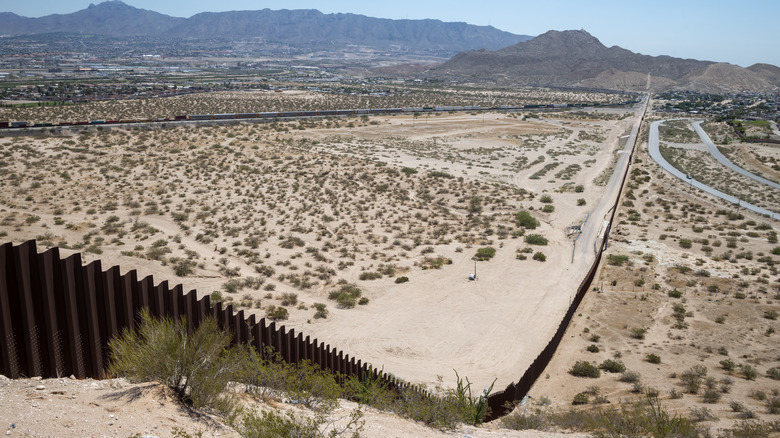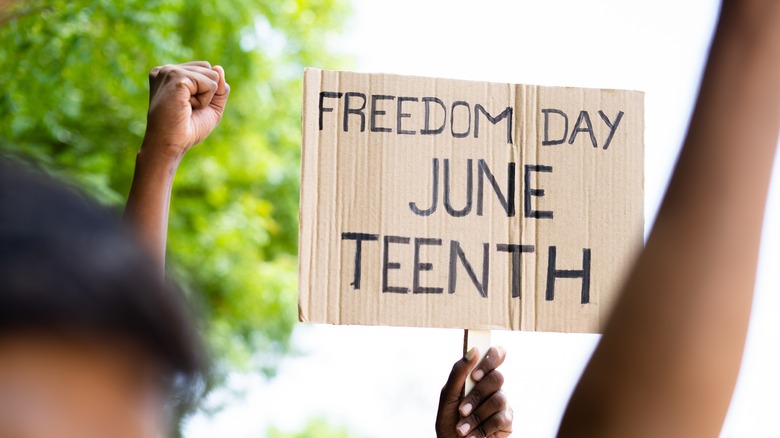How A Small Village In Mexico Came To Celebrate Juneteenth
Juneteenth marks the date when the last enslaved African Americans were freed by executive order. It occurred on June 19, 1865 (per Al.com) in Galveston, Texas, when troops arrived to notify the enslaved people of the end of the Civil War. This debunks the common misconception that President Abraham Lincoln's 1863 Emancipation Proclamation (per Learn Liberty) ended slavery in the United States. This proclamation did free slaves in Confederate areas brought under Union control (and grew to include lands that Union troops successfully occupied even after the proclamation) during the Civil War, but it was not a blanket statement. It excluded border states and patches of land that did not join the rebellious Confederate states.
That day in 1865 was not widely celebrated until decades later, during the civil rights movement in the 1950s and 1960s. It was not until 2021 that June 19 became the federal holiday of Juneteenth. When President Joe Biden signed off on creating this federal holiday, no federal holidays had been declared since Martin Luther King, Jr. Day in 1983 (per Al.com).
Former slaves crossed the Mexico border in search of freedom
Celebrations of Juneteenth go beyond the borders of the United States. According to NBC News, groups of formerly enslaved African Americans lived near Seminole tribes in Florida during the 1700s when Spain owned the territory. After settling in Florida, some of these so-called Black Seminoles went with Native Americans to Oklahoma as part of the Trail of Tears, and then to Mexico, whose congress fully outlawed slavery in 1837 (per NPR). The territory on which the Black Seminoles and Native Americans settled became known as Nacimiento de los Negros in northern Mexico.
Maria Esther Hammack of the University of Austin explained that upwards of 10,000 slaves escaped to Mexico despite the fact that slave hunters dotted the border. The descendants of these slaves in the town of Nacimiento de los Negros refer to June 19 as Día de los Negros, which translates to the Day of the Blacks. These descendants celebrate the occasion with barbeques, dishes from the native tribes of their mixed ancestry, and clothing historically similar to that of the Black Seminoles (per Texas Monthly).
Juneteenth connects people with African American history
Though many of the Black Seminoles and other former slaves who fled to Mexico returned to the United States after the Civil War, learning about the Black Seminoles has allowed for their descendants to better understand their family heritage (per NBC News). Corina Torralba Harrington explained that she did not learn about the Black Seminoles or Juneteenth in school. Learning about the Black Seminoles gave her answers about family past and present. Her family is now working to preserve the Black Seminole language. As with other native languages all over the world (per the U.S. Department of Health & Human Services' Administration for Native Americans), those who speak them hope to prevent these languages from becoming so-called dead languages.
The mixture of African American heritage with Mexican and Native American are just some examples of the melting pot that is the Americas. Irish Central states that 38% of African Americans in the United States have Irish ancestry as well. In Brazil, Minority Rights estimates that 91 million Brazilians also have African roots. This shows that the impact of Juneteenth could connect with people thousands of miles away from Texas.


